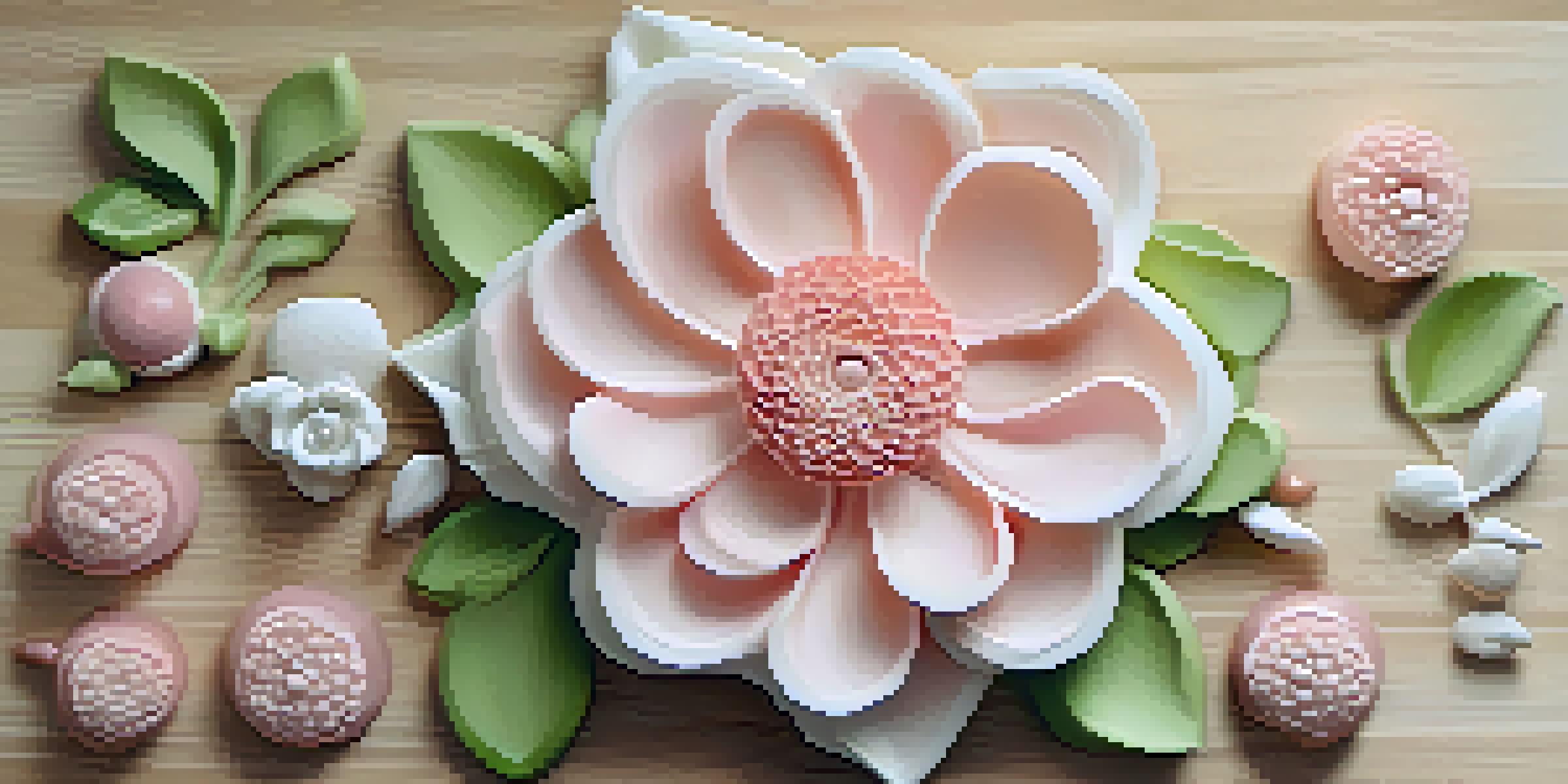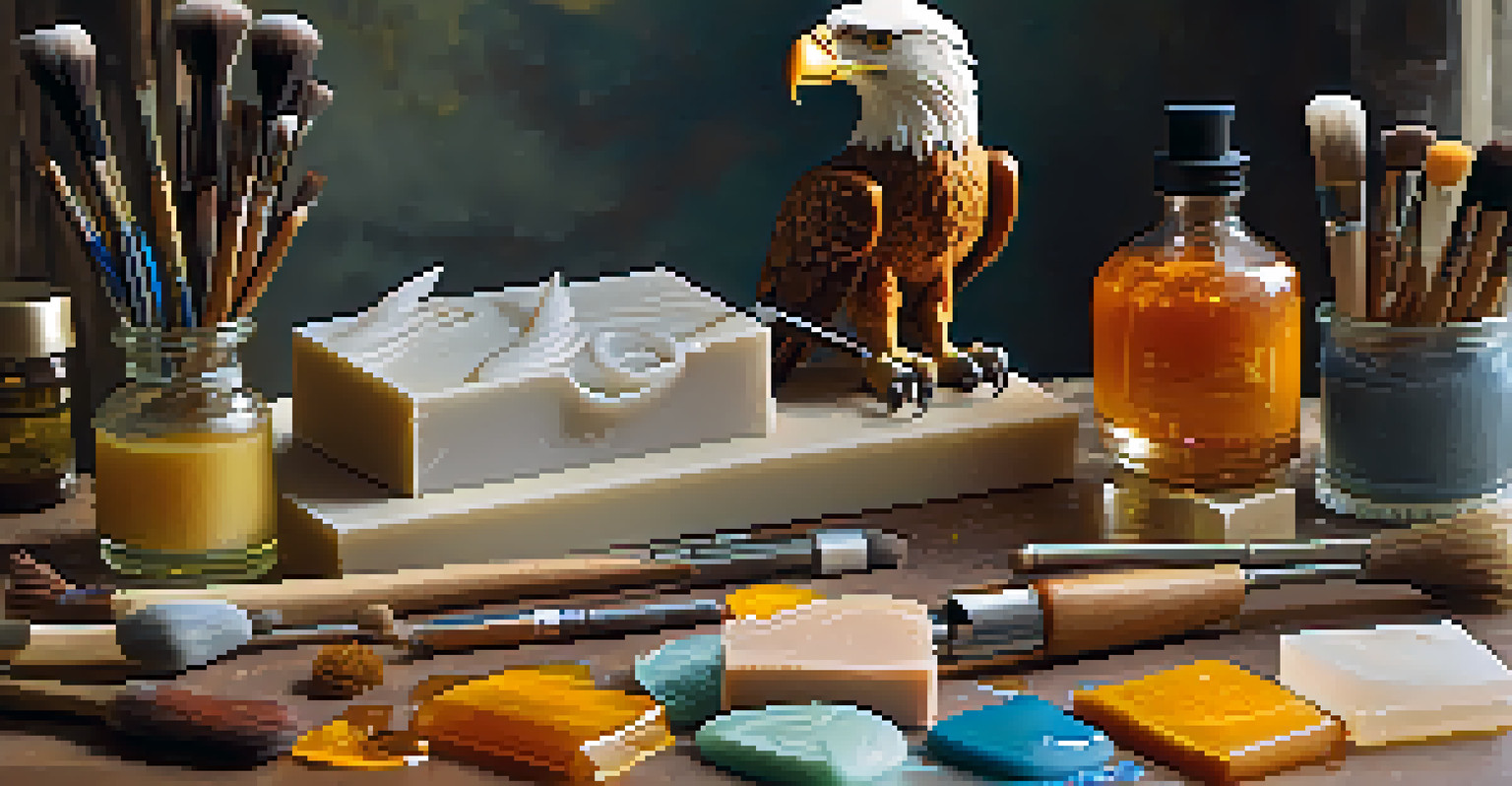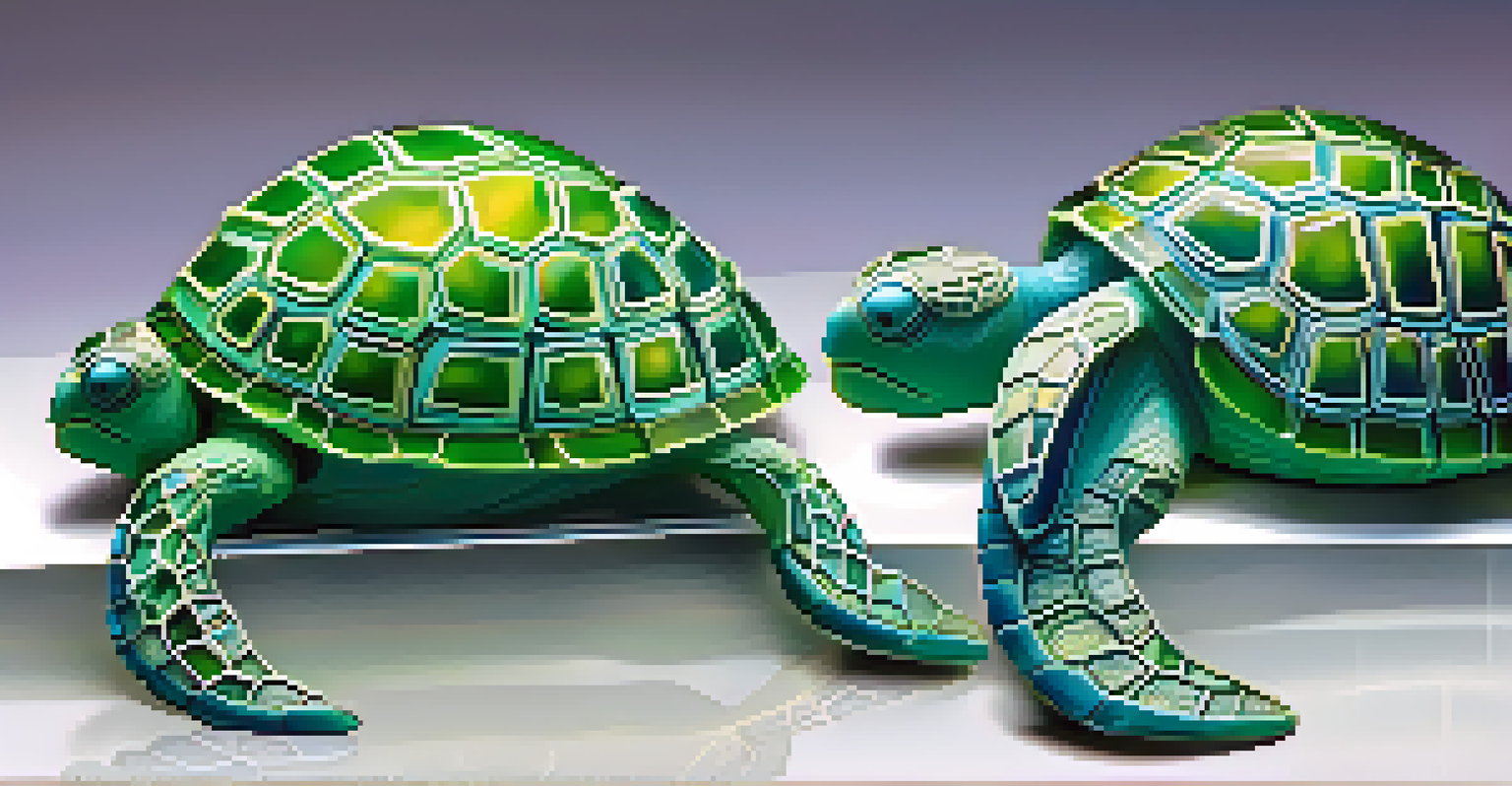From Concept to Creation: The Soap Sculpting Process Explained

Understanding the Art of Soap Sculpting
Soap sculpting is more than just a craft; it's a creative expression that combines artistry and functionality. At its core, this process transforms ordinary soap into stunning works of art that can be both decorative and practical. Artists often draw inspiration from nature, architecture, or even abstract concepts, making each piece unique.
Art is not what you see, but what you make others see.
The beauty of soap sculpting lies in its versatility. Whether you're a hobbyist or a professional, anyone can create beautiful designs with the right techniques and materials. This art form allows individuals to explore their creativity while producing items that can be used daily or gifted to others.
In essence, soap sculpting is a delightful blend of imagination and craftsmanship. It invites creators to experiment with shapes, colors, and textures, leading to endless possibilities in design. Understanding the steps involved in this process is essential for anyone looking to dive into the world of soap artistry.
The Importance of Planning Your Design
Before diving into the sculpting process, having a well-thought-out plan is crucial. This phase involves sketching out ideas and deciding on the final design, which can significantly impact the outcome. Planning helps to visualize the piece and ensures that the sculptor remains focused throughout the creative journey.

Choosing the right design also involves considering the type of soap being used. Different soaps have varying properties, which can affect how they hold shape and detail. For instance, glycerin soap is known for its transparency and is ideal for intricate designs, while traditional cold-process soap may be better for simpler forms.
Planning is Key to Successful Sculpting
A well-thought-out design plan helps sculptors visualize their piece and stay focused throughout the creative process.
By taking the time to plan, artists can mitigate potential challenges that may arise during the sculpting process. This foresight not only enhances the final product but also makes the overall experience more enjoyable and satisfying.
Gathering the Right Materials for Sculpting
Once the design is set, the next step is gathering the necessary materials. This includes selecting the type of soap, tools for sculpting, and any additional elements like colorants or fragrances. Each material plays a pivotal role in the quality and appearance of the final sculpture.
The only way to do great work is to love what you do.
For beginners, it's advisable to start with a simple soap base that is easy to work with. Glycerin soap, for example, is often preferred due to its malleability and ease of use. As skills develop, artists can experiment with more complex materials and techniques, expanding their creative horizons.
Having the right tools is equally important. From carving knives to molds, each tool serves a specific purpose and can significantly affect the sculpting process. Investing in quality tools can make the work smoother and more enjoyable, leading to better results.
Melting and Pouring the Soap Base
The melting and pouring stage is where the magic begins. Soap bases are typically melted down to a liquid state, allowing for easy manipulation and pouring into molds. This process can be done using a microwave or a double boiler, ensuring that the soap is heated evenly without burning.
Once melted, colorants and fragrances can be added, allowing artists to customize their creations further. This step not only enhances the aesthetic appeal but also allows for a sensory experience with fragrant soaps. The key is to mix thoroughly to ensure even distribution of colors and scents.
Materials Impact Sculpture Quality
Choosing the right soap type and quality tools is essential for achieving detailed and beautiful soap sculptures.
After mixing, the liquid soap is poured into molds or shaped by hand. This stage requires a steady hand, as the sculptor must work quickly before the soap begins to cool and harden. Timing is crucial, as it can dictate the level of detail that can be achieved in the final piece.
Sculpting Techniques for Intricate Designs
With the soap now set, the real sculpting begins. Artists can utilize various techniques, such as carving, layering, and texturing, to bring their designs to life. Each technique requires a different approach and can dramatically change the appearance of the final sculpture.
For instance, carving involves using specific tools to shave away layers of soap, revealing the design beneath. This technique requires patience and precision, as it’s easy to over-carve and lose details. Layering, on the other hand, allows for more complex designs by adding layers of soap on top of one another.
Texturing adds depth and character to the sculpture, making it visually intriguing. Whether through the use of specialized tools or simple techniques like pressing with a textured surface, this step can elevate a basic design into a stunning piece of art.
Finishing Touches: Polishing Your Sculpture
After the sculpting process, it’s time to add those final touches that make a piece truly shine. This might include smoothing out rough edges, adding highlights, or applying a protective coating. These details can enhance the overall look and longevity of the sculpture.
Polishing can be done using fine-grit sandpaper or a soft cloth, depending on the desired finish. This step not only improves the appearance but also makes the sculpture more pleasant to touch. A well-finished piece can become a cherished item or a beautiful gift.
Showcase Your Art to Build Community
Sharing your completed soap sculptures online can connect you with fellow artists and potential customers, enriching your creative journey.
Additionally, incorporating decorative elements like ribbons or embellishments can further personalize the sculpture. These final details are where the artist can infuse their personality into the piece, making it a true reflection of their creative vision.
Showcasing and Sharing Your Soap Sculptures
Once the soap sculptures are complete, it’s time to share them with the world! Whether through social media, local craft fairs, or online marketplaces, showcasing your creations can be an exciting part of the process. This not only allows for feedback but also connects artists with potential customers or fellow enthusiasts.
Creating an online presence can be particularly beneficial. Platforms like Instagram and Etsy provide a space for artists to display their work and reach a broader audience. Engaging with followers through posts and stories can turn a simple hobby into a thriving business.

Moreover, sharing your journey, including the challenges and triumphs, can inspire others to explore soap sculpting. Building a community around this art form can lead to collaborations, workshops, and even lifelong friendships, enriching the overall experience.